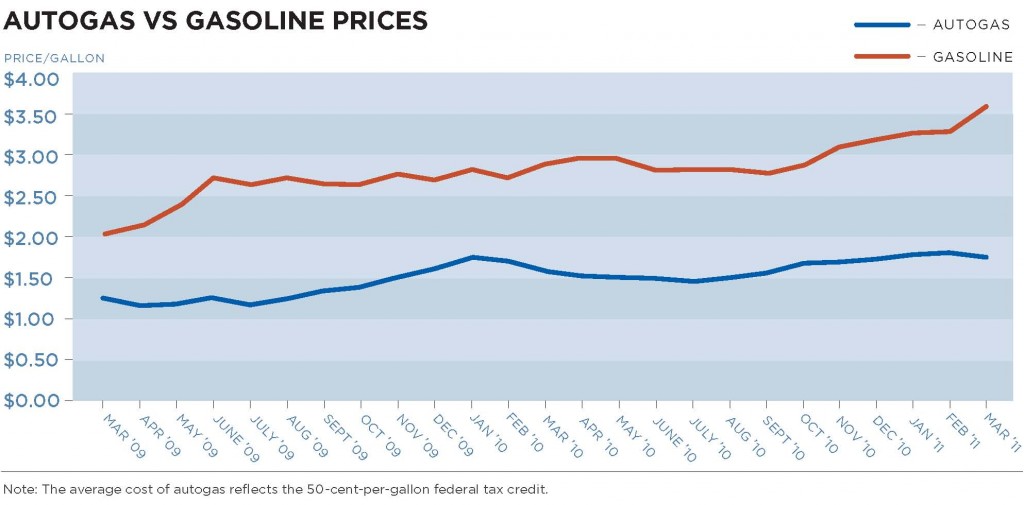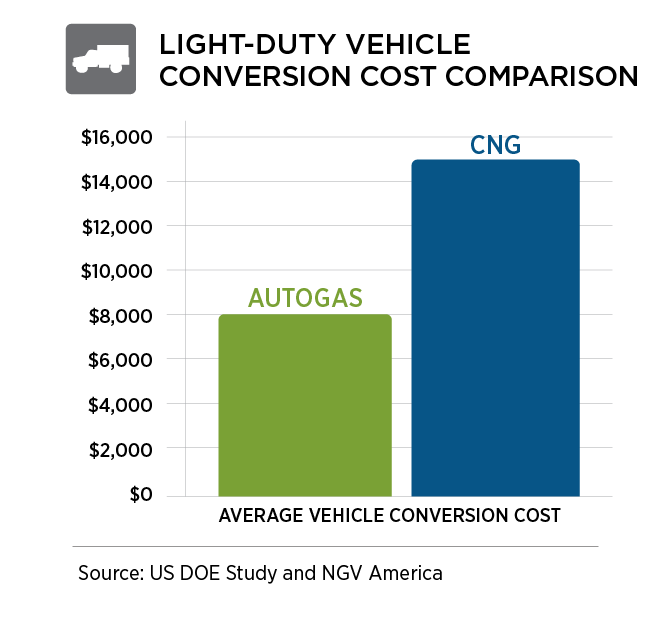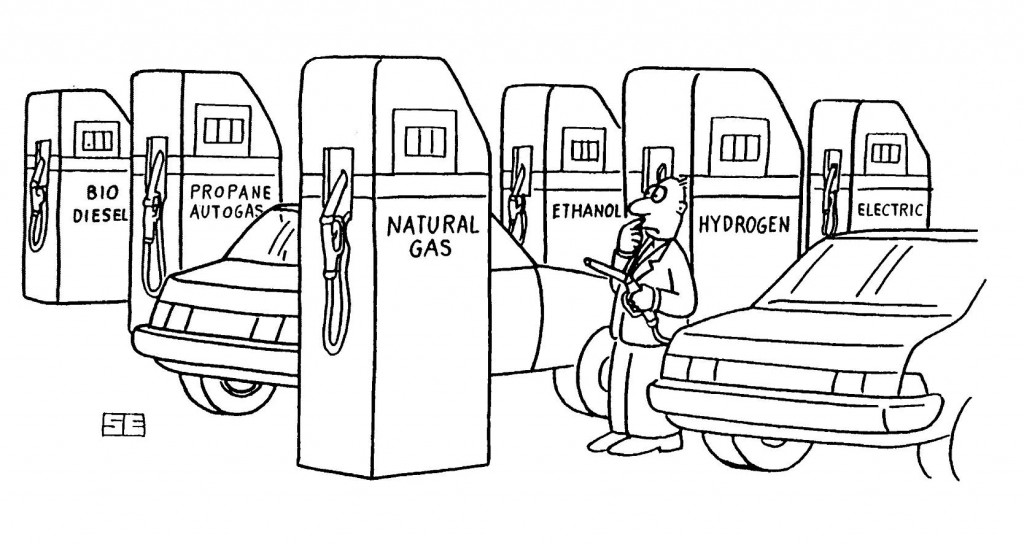It’s no secret that gasoline is expensive, but what many Americans don’t know is the cost of the alternative. Autogas for America released a new Alternative Fuel Fact Brief on Aug. 24. The paper highlights how propane autogas, while as practical to use as traditional fuels, is cheaper and cleaner than gasoline. The study considers the big picture, pointing out that high gasoline prices are not just a burden to the individual consumer, but are crippling an economic recovery.
The study demonstrates that gasoline is not only an expensive resource, but also a volatile one. While the cost of gasoline nearly doubled in 2009, autogas prices remained low and relatively flat. Gas started at $2, and jumped all over the board from there. Historically, autogas has cost about $1.25 per gallon less than gasoline, when including a 50-cent-per-gallon federal alternative fuel tax credit. Some states even provide tax incentives for using alternative fuels like autogas.
For organizations already burdened by strained budgets, the high price of and uncertainty surrounding oil can complicate planning for the future. Everything from turmoil in the Middle East to declines in foreign reserves can drive up the price of oil. However, 90 percent of the U.S. autogas supply is made in America. While prices at the pump reflect instant savings for autogas fleets, autogas has also produced long-term savings. Vehicles running on autogas have been on American roads for years now, and real-world case studies show as much as $145,000 in annual fuel savings for fleets making the switch from gasoline to autogas.
The cost savings from autogas use offer more than just the immediate rollback for the consumer. Lowering fixed costs like fuel expenses helps to create and save jobs, support a green energy economy and boost a company’s bottom line.
For a comprehensive look at the differences between autogas and gasoline, visit the Resources page of the Autogas for America website.







